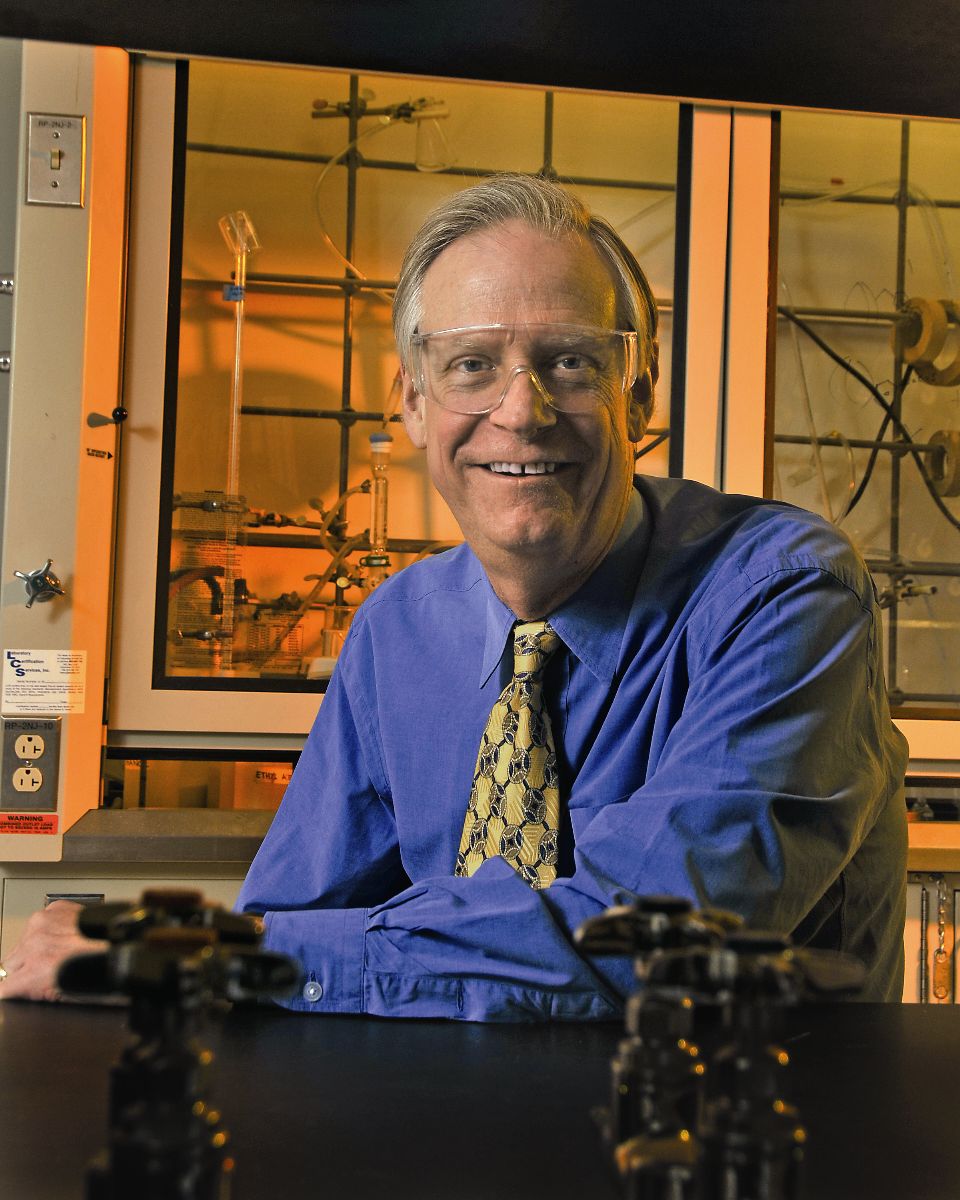Welcome to the first edition of Chemistry News
 Welcome back to Wayne State University's chemistry department. As you will see in this update, we are thriving. Among many developments, the most significant was undoubtedly the $76 million renovation of our chemistry building, which occurred in two phases from 2004-11. We now have a modern, state-of-the-art research facility that is totally different from the building you may remember from your time on campus.
Welcome back to Wayne State University's chemistry department. As you will see in this update, we are thriving. Among many developments, the most significant was undoubtedly the $76 million renovation of our chemistry building, which occurred in two phases from 2004-11. We now have a modern, state-of-the-art research facility that is totally different from the building you may remember from your time on campus.
The renovation included all new labs and offices throughout the building. Thanks to the generous support of Paul and Carol Schaap, the building also sports an impressive glass atrium and lecture hall attached to the Cass Avenue entrance. We also have a new central instrument facility named in honor of Lumigen the company Paul Schaap founded as well as informal meeting areas designed to increase collaboration among students and faculty. In gratitude for the Schaaps' gift, the building has been named the A. Paul Schaap Chemistry Building.
In this inaugural edition of our department's newsletter, you'll have a chance to hear from the Schaap's. You may remember Paul as a faculty member in the organic division and Carol served as assistant to the chair for many years. They created the Schaap Endowed Chair in Organic Chemistry, the Schaap Scholar awards to support the research activities of top faculty in the department and a generous endowment to support outstanding graduate students. They have been extraordinarily generous to the department in recent years, and their gifts have enabled us to recruit and retain the best faculty and students and keep us in the top echelon of academic chemistry departments.
The story behind the Schaaps' success and philanthropy illustrates a key aspect of the contemporary research university that, in my opinion, is often overlooked when justifications for the university's research enterprise are made to the state and to the public at large the significance of intellectual property stemming from faculty research and inventions that may lead to important commercial opportunities.
In Paul Schaap's case, observations made in his research lab by graduate students and postdoctoral fellows and supported by WSU technology transfer led directly to the creation of Lumigen, which is still in operation and continues to generate revenue and taxes in Southeast Michigan while providing high-tech, high-wage jobs none of which would exist without the initial research done in our department. Of course, Lumigen is not the only spinoff company stemming from research in our department. The first was Ash-Stevens, a still-thriving enterprise currently under the able leadership of Dr. Steven Munk, son of Dr. Art Munk, who obtained his Ph.D. in our department in 1959. More recently, technology developed by Professor John Santa Lucia led to the creation of DNA Software.
This translation of basic research to intellectual property and beyond was made possible by the enactment of the Bayh-Dole legislation in the early '80s which, for the first time, allowed researchers and universities to benefit from discoveries supported by federal research funds. This story is repeated at many other research universities in the country, and it has opened the door to benefits and economic development not previously possible.
This underlying theme of research with potential commercial applications is seen throughout this newsletter. In the following pages, you'll read about Professor David Crich, holder of the Schaap Endowed Chair in Organic Chemistry, whose research on new antibacterial agents is addressing a dilemma that is of concern to all. With few exceptions, most pharmaceutical houses are not aggressively pursuing new and more potent antibiotics, with reasons often ascribed to low-profit margins with these types of compounds. But equally important is that most of the "low-hanging fruit" has been picked already. Work such as Crich's offers a potential to address this dilemma.
You'll also read about Professor Charles Winter's research into new methods for depositing thin films of material another example of basic research leading to inventions that may have practical applications in the microelectronics industry.
These lab-to-industry developments are not confined to faculty research alone. Alumni like Surendra Gupta, who started a successful company in St. Louis following doctoral studies in our department, are doing great work throughout the industry. And our long-dormant ACS Student Affiliates chapter, recently reborn, is attempting to make WSU's the top chapter in the country. Judging by their many activities in just the past year, I'm putting money on them to succeed.
I hope you enjoy reconnecting with your department through this newsletter. I encourage you to visit or to contact me or any of our faculty with questions and comments.
James H. Rigby, professor and chair